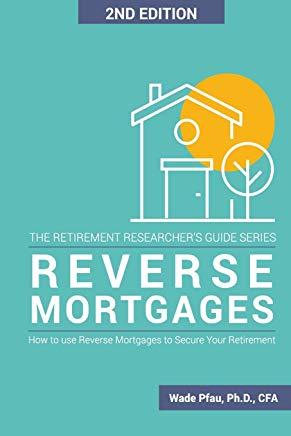
Pfau Ph. D., Wade D.
This book provides an up-to-date understanding about reverse mortgages and how to use them as part of a complete and responsible retirement plan. Those who understand whether and how to fit a reverse mortgage into their retirement plan will have an important edge in achieving a financially secure retirement.
This book is special as I do not work in the reverse mortgage industry and am not trying to sell you a reverse mortgage. Rather, I am a Professor of Retirement Income and director of the Retirement Income Certified Professional(R) designation for financial advisors. I am also the Retirement Researcher. These roles require me to be agnostic and to search for the best from different retirement income styles and tools. This is what led me down the path of studying reverse mortgages and the role they can play in well-constructed and thoughtful retirement income plan. My perspective is on how to build strong retirement plans, and this is the perspective I bring to reverse mortgages.
Reverse mortgages have been surrounded by negativity. They were often mentioned alongside phrases like "last resort," "out of money," and "bad choice." My attention was drawn to reverse mortgages to give them an in-depth study. I concluded that reverse mortgages are not inherently a bad idea, though they are often misunderstood and not used in a most beneficial way. I realized that reverse mortgages---when used correctly---can provide an added layer of security for retirees and allow them to enjoy retirement more by having greater flexibility for their assets. Opening a reverse mortgage earlier in retirement and using it in a strategic manner is generally more effective that treating a reverse mortgage as a last resort option only to be considered when all else has failed.
After providing an overview of retirement income planning, which sets the context for understanding the potential role of reverse mortgages, I will give you a firm understanding about the basics for how reverse mortgages work. You will understand why they work better when interest rates are low (unlike every other retirement tool), the potential for line of credit growth, and their ability to help manage sequence of returns risk for investment assets. Then I dive into their flexibility and many potential uses:
- Use to refinance your traditional mortgage so you do not have fixed mortgage payments chomping away at your retirement assets in your early retirement years
- Use to fund home renovations to support aging in place and allow you to stay in your home for longer
- Use the Home Equity Conversion Mortgage (HECM) for Purchase program to obtain a new primary residence while reducing the strain on your other assets to cover the cost
- Coordinate spending from your reverse mortgage line of credit with your other investment assets to better manage the risks associated with a downturn in the financial markets
- Use as a bridge to help cover spending while delaying your Social Security benefits to get the most lifetime value from Social Security
- Use as a spending source to avoid shifting into a higher tax bracket or to pay for the taxes on strategic Roth conversions
- Use to pay premiums on existing long-term care insurance policies to avoid lapsing if there is a premium increase
- Use the growing line of credit as a protective hedge for your home value
- Use the growing line of credit as a source of reserves to cover unexpected bills or to divide the home value as part of a divorce settlement







